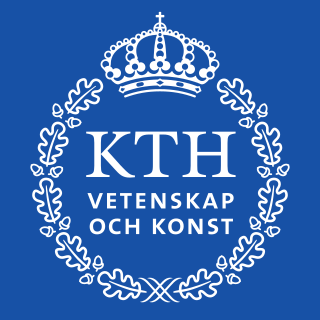
The KTH Royal Institute of Technology, abbreviated KTH, is a public research university in Stockholm, Sweden. KTH conducts research and education in engineering and technology and is Sweden's largest technical university. Currently, KTH consists of five schools with four campuses in and around Stockholm.
The Volvo Group is a Swedish multinational manufacturing corporation headquartered in Gothenburg. While its core activity is the production, distribution and sale of trucks, buses and construction equipment, Volvo also supplies marine and industrial drive systems and financial services. In 2016, it was the world's second-largest manufacturer of heavy-duty trucks.
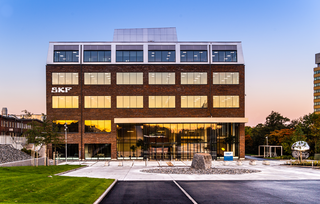
AB SKF is a Swedish bearing and seal manufacturing company founded in Gothenburg, Sweden, in 1907. The company manufactures and supplies bearings, seals, lubrication and lubrication systems, maintenance products, mechatronics products, power transmission products, condition monitoring systems and related services globally.

Linköping University is a public research university in Linköping, Sweden. Linköping University was granted full university status in 1975 and is one of Sweden's largest academic institutions. The university has four campuses across three cities: Campus Valla and Campus US in Linköping, Campus Norrköping in Norrköping and Campus Lidingö in Stockholm. It is organized into four faculties: Arts and Sciences, Medicine and Health Sciences, Educational Sciences, and the Institute of Technology. In order to facilitate interdisciplinary work, there are 12 large departments combining knowledge from several disciplines and often belonging under more than one faculty. Linköping University emphasises dialogue with the surrounding business sphere and the community at large, both in terms of research and education. In 2021, the university was home to 35,900 students and 4,300 employees. It is a member of the European Consortium of Innovative Universities, as well as a founding member of the Conceive Design Implement Operate Initiative.

Christopher Polhammar better known as Christopher Polhem, which he took after his ennoblement in 1716, was a Swedish scientist, inventor and industrialist. He made significant contributions to the economic and industrial development of Sweden, particularly mining. He was ennobled by King Charles XII of Sweden for his contributions to Swedish technological development.
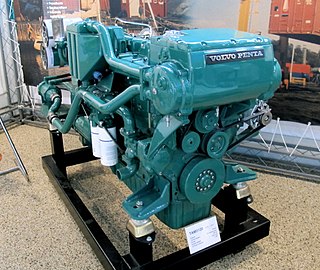
Volvo Penta was founded as Penta in 1907 with the production of its first marine engine, the B1. The Penta company soon became an established internal combustion engine manufacturer, which in 1927 delivered the engine for Volvo's first passenger car.
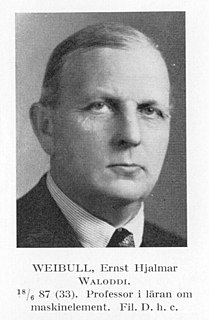
Ernst Hjalmar Waloddi Weibull was a Swedish engineer, scientist, and mathematician.

The Volvo ÖV 4 was the first car built by Volvo. The designation ÖV 4 stands for "Öppen Vagn 4 cylindrar" in Swedish, which means Open Carriage, 4 cylinders. The model ÖV 4 has later often been referred to as "Jakob" but that was just a name for one of the 10 pre-series ÖV 4 that was ready on 25 July 1926, Jakob's name day. All 10 prototypes were assembled in Stockholm at the company AB Galco, Hälsingegatan 41 where Gustaf Larson worked at that time. Only one of the 10 pre-series cars manufactured during 1926 was saved for posterity and is housed at the Volvo Museum in Gothenburg, Sweden.
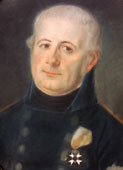
Jonas Lidströmer (1755–1808) was a Swedish inventor and officer in the Swedish Navy. Lidströmer was born in 1755 at Lagfors bruk, Medelpad, and died 1808 in Stockholm. He was a colonel-mecanicus, head of the mechanical state of the Royal Swedish-Finnish Navy, Royal Inventor and advisor to the king, Knight of the Order of Vasa and eventually knighted Lidströmer.

Assar Thorvald Nathanael Gabrielsson was a Swedish industrialist and co-founder of Volvo.

Erik Gustaf Larson was a Swedish automotive engineer and the co-founder of Volvo. He held a Master of Science degree in mechanical engineering from the Royal Institute of Technology in Stockholm.

Björn Gustaf Prytz was a Swedish industrialist in the early 1900s and from 1938 to 1946 Minister Plenipotentiary in London for the Swedish government.

Fredrik Ljungström was a Swedish engineer, technical designer, and industrialist.

The Swedish National Museum of Science and Technology is a Swedish museum in Stockholm. It is Sweden’s largest museum of technology, and has a national charter to be responsible for preserving the Swedish cultural heritage related to technological and industrial history. Its galleries comprise around 10,000 square meters, and the museum attracts annually about 350,000 visitors. The collections consist of more than 55,000 objects and artifacts, 1 200 shelf metres of archival records and documents, 200,000 drawings, 800,000 images and about 40,000 books. The National Museum of Science and Technology also documents technologies, processes, stories and memoirs in order to preserve them for generations to come.
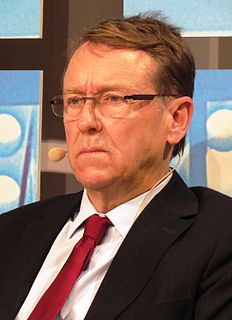
Jan-Eric Sundgren, is a Swedish engineer who served as senior vice president at Volvo Group from 2006 until 2013. Prior to that, he was a professor of physics at Linköping University, and served as rector at Chalmers University of Technology from 1998 until 2006.

Hanif Mohamed Kara is a structural engineer and is design director and co-founder of London-based structural engineering practice AKT II. He has taught design internationally, is a member of the board of trustees for the Architecture Foundation and was a commissioner for CABE from 2008 to 2011. He is currently Professor in Practice of Architectural Technology at Harvard Graduate School of Design. He also taught as professor of Architectural Technology at KTH Royal Institute of Technology in Stockholm from 2009 until 2012. He lives in London with his wife and two daughters.
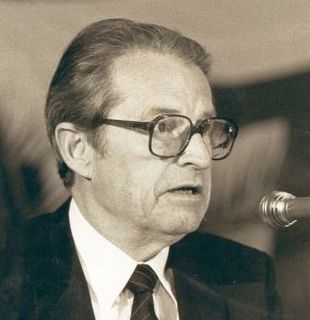
Curt René Nicolin was a Swedish businessman. He served as the chairman of ASEA and the Swedish Employers Association.

Gunnar Ljungström (1905-1999) was a Swedish engineer and technical designer, specialised in aerodynamics and automobile industry, pioneering the early history of the Swedish car brand SAAB.
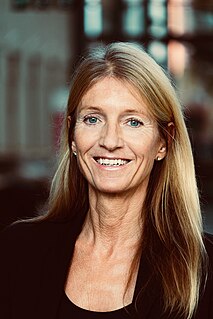
Sofia Börjesson is a Swedish Professor (chair) in Technology Management Department at Chalmers University of Technology in Gothenburg Sweden. Her academic research field evolves around questions of how large, mature organizations change and develop with focus on the management of innovation work. She works on applying innovation as an organizational transformation and in particular in a context of business model innovation. She applies qualitative methods, often collaborative research methods cooperating with industrial partners with the intent to create actionable knowledge. She has published her work in journals such as R&D Management, Journal of Change Management, Int. J. Operations and Production Management, Technovation and Creativity and Innovation Management.


















